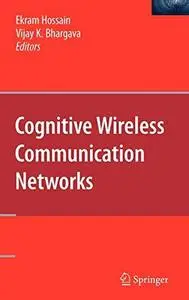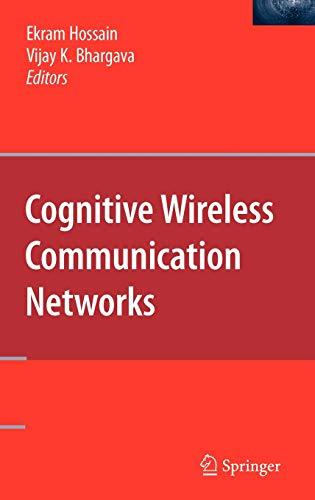Cognitive wireless communication networks By Ekram Hossain, Vijay K. Bhargava
2007 | 465 Pages | ISBN: 0387688307 | PDF | 7 MB
2007 | 465 Pages | ISBN: 0387688307 | PDF | 7 MB
The proposed book includes a set of research and survey articles featuring the recent advances in theory and applications of cognitive radio technology for the next generation (e.g., fourth generation) wireless communication networks. Cognitive radio has emerged as a promising technology for maximizing the utilization of the limited radio bandwidth while accommodating the increasing amount of services and applications in the wireless networks. A cognitive radio transceiver is able to adapt to the dynamic radio environment and the network parameters to maximize the utilization of the limited radio resources while at the same time providing flexibility in wireless access. Development of cognitive radio technology has to deal with technical and practical considerations as well as regulatory requirements, and therefore, there is an increasing interest on this technology among the researchers and the spectrum policy makers. The contributed articles cover both the theoretical concepts (e.g., information-theoretic analysis) and system-level implementation issues. Therefore, the book provides a unified view on the state of the art of cognitive radio technology. The topics include information-theoretic analysis of cognitive radio systems, challenges and issues in designing cognitive radio systems, architectures and protocols for cognitive wireless networks, distributed adaptation and optimization methods, real-time spectrum sensing and channel allocation, cognitive machine learning techniques, interoperability and co-existence issues, spectrum awareness and dynamic channel selection, cross-layer optimization of cognitive radio systems, cognitive radio test-beds and hardware prototypes, regulatory issues on spectrum sharing, and applications of cognitive radio networks. The book starts with the essential background on cognitive radio techniques and systems (through one/two survey articles), and then it presents advanced level materials in a step-by-step fashion so that the readers can follow the book easily. The rich set of references in each of the articles will be invaluable to the researchers. The book is useful to both researchers and practitioners in this area. Also, it can be adopted as a graduate-level textbook for an advanced course on wireless communication networks.



